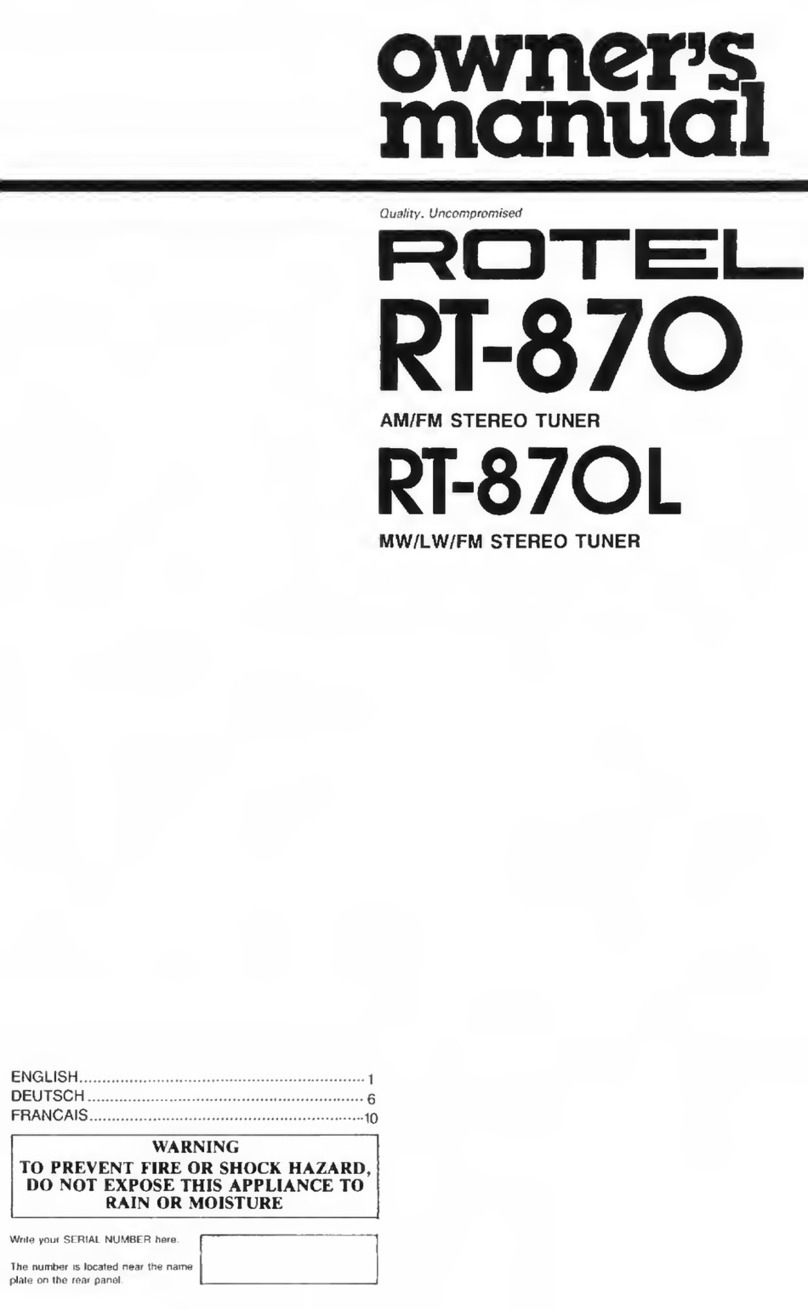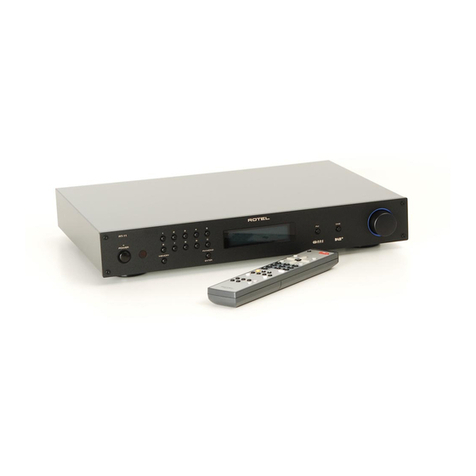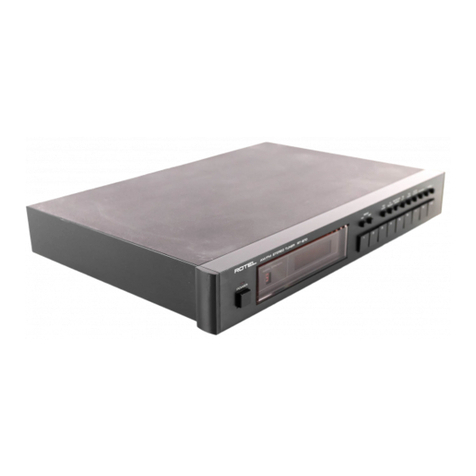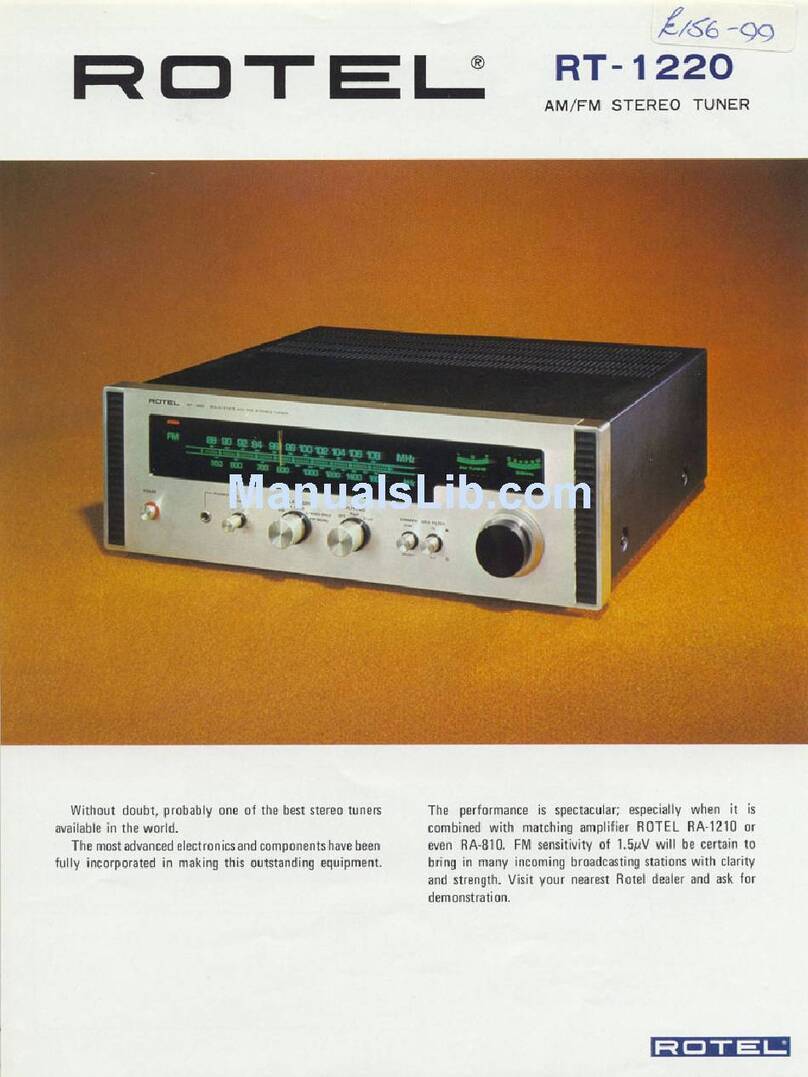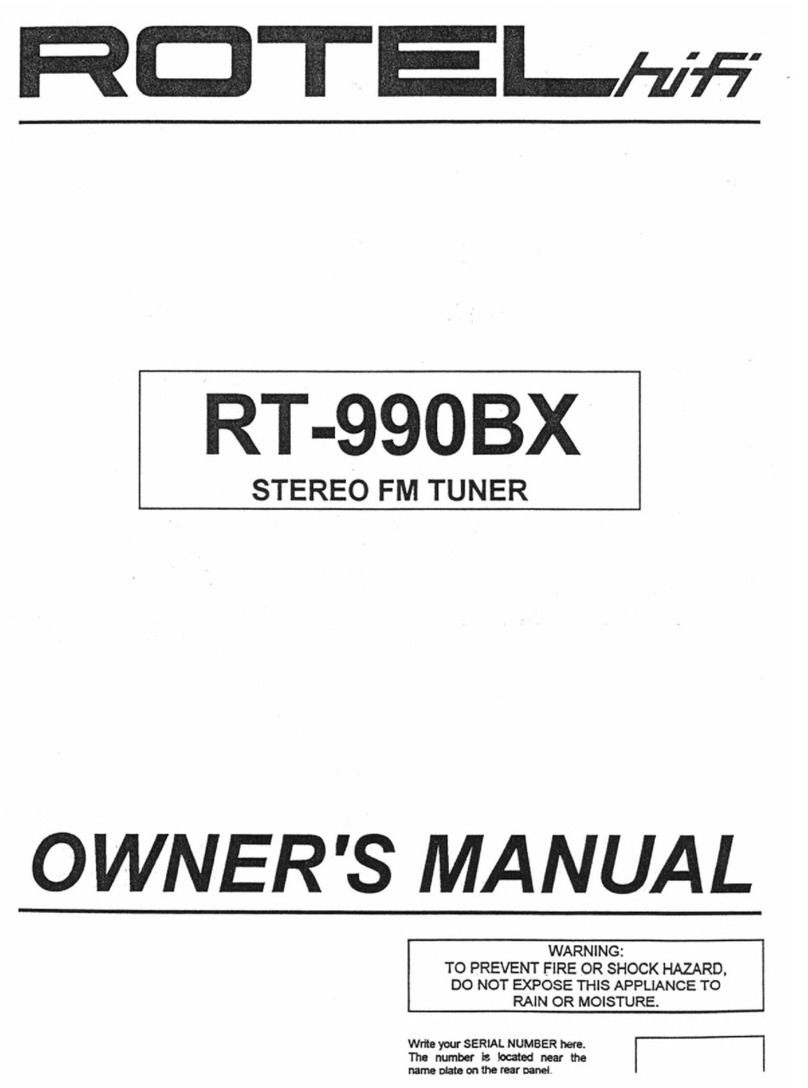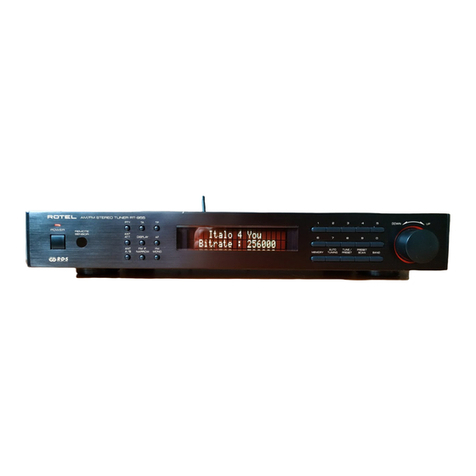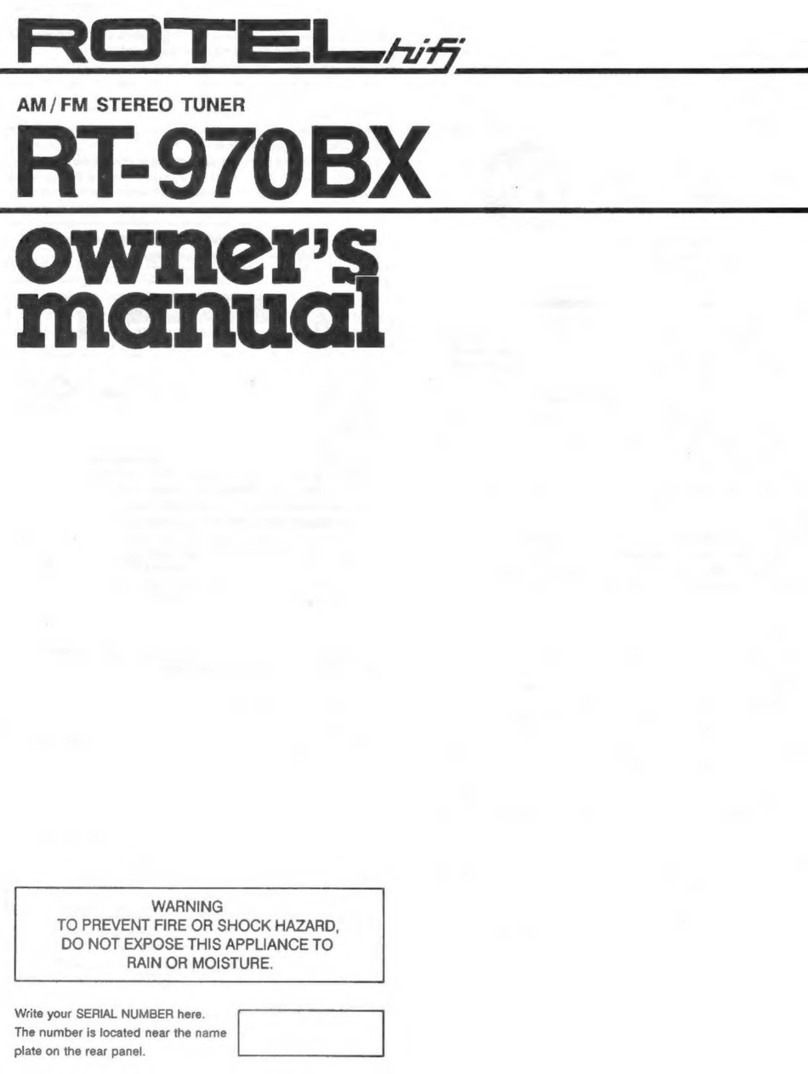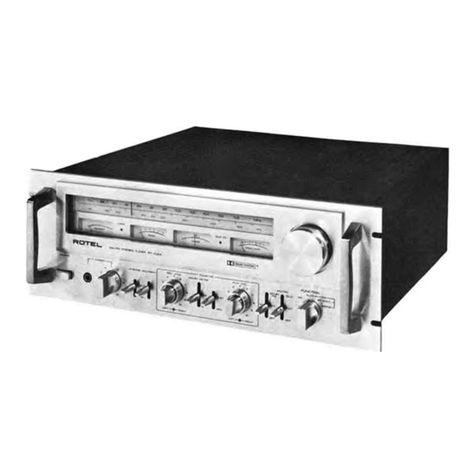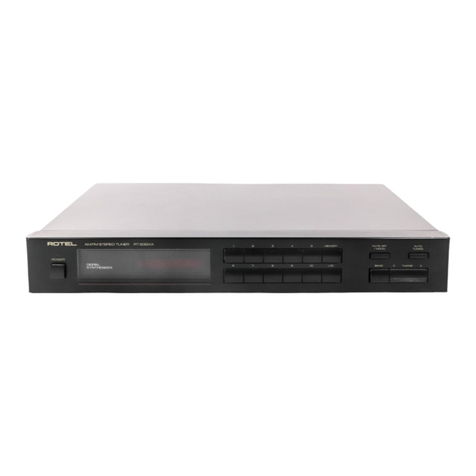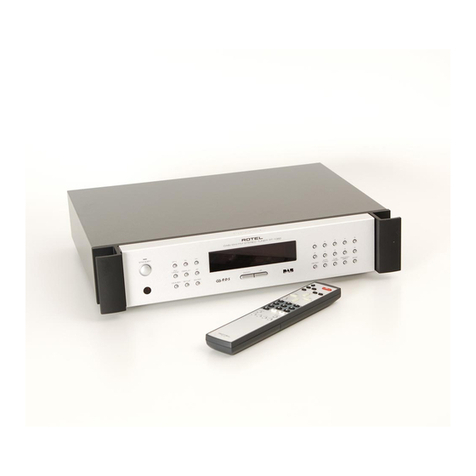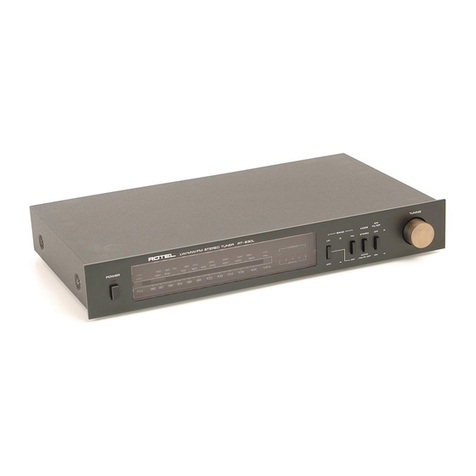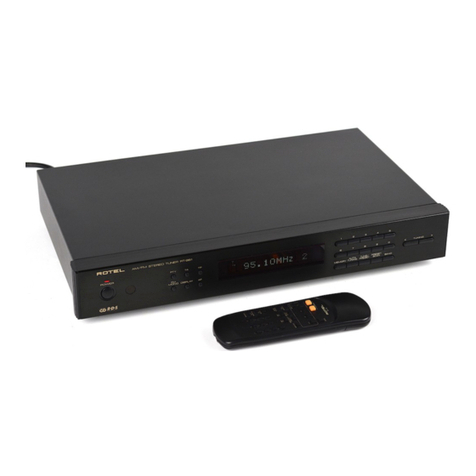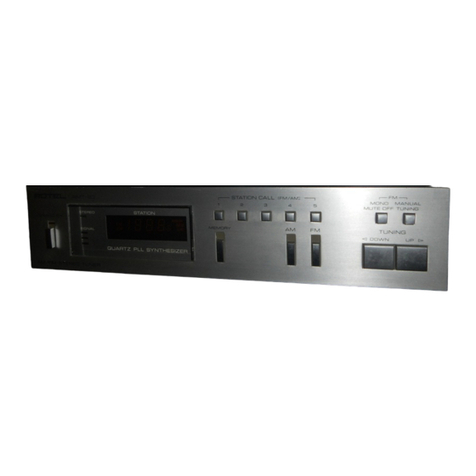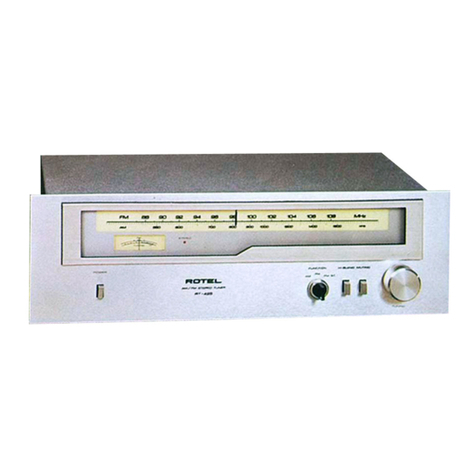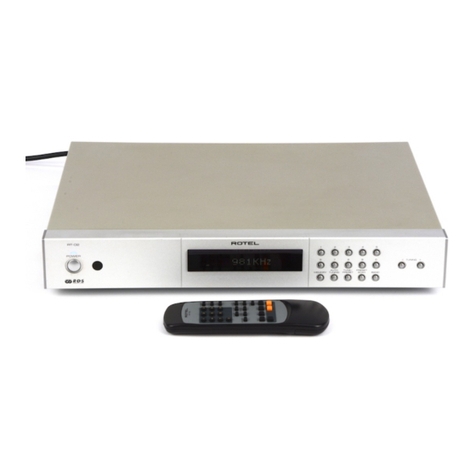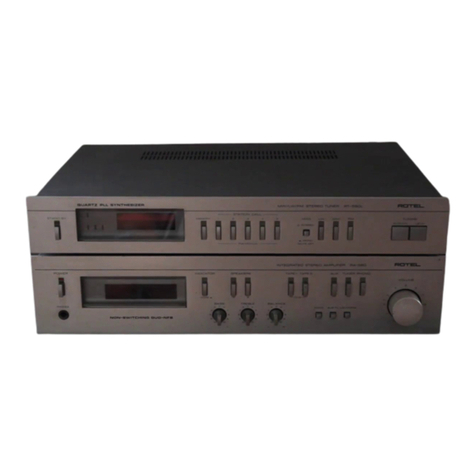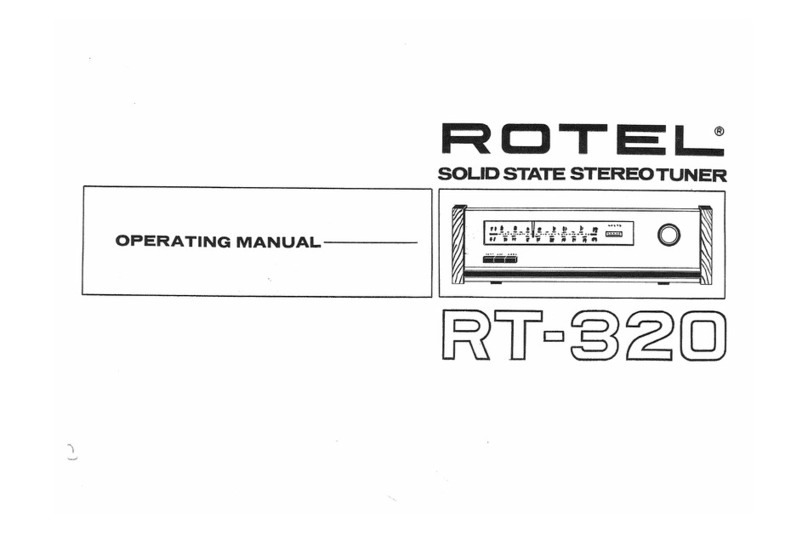
5
English
WARNING:
There are no user serviceable parts inside. Refer all
servicing to qualified service personnel.
WARNING:
To reduce the risk of fire or electric shock, do not
expose the unit to moisture or water. Do not allow
foreign objects to get into the enclosure. If the unit
is exposed to moisture, or a foreign object gets into
the enclosure, immediately disconnect the power cord
from the wall. Take the unit to a qualified service
person for inspection and necessary repairs.
Read all the instructions before connecting or operating the
component. Keep this manual so you can refer to these safety
instructions.
Heed all warnings and safety information in these instruc-
tions and on the product itself. Follow all operating instruc-
tions.
Clean the enclosure only with a dry cloth or a vacuum cleaner.
You must allow 10 cm or 4 inches of unobstructed clearance
around the unit. Do not place the unit on a bed, sofa, rug, or
similar surface that could block the ventilation slots. If the
component is placed in a bookcase or cabinet, there must be
ventilation of the cabinet to allow proper cooling.
Keepthecomponentawayfromradiators,heatregisters,stoves,
or any other appliance that produces heat.
The unit must be connected to a power supply only of the type
and voltage specified on the rear panel of the unit.
Connect the component to the power outlet only with the sup-
pliedpower supply cable oran exact equivalent. Donot modify
thesupplied cable in any way.Donotattempttodefeatground-
ingand/or polarization provisions. Donot use extension cords.
Do not route the power cord where it will be crushed, pinched,
bent at severe angles, exposed to heat, or damaged in any
way. Pay particular attention to the power cord at the plug
and where it exits the back of the unit.
The power cord should be unplugged from the wall outlet if
the unit is to be left unused for a long period of time.
Immediately stop using the component and have it inspected
and/or serviced by a qualified service agency if:
• The power supply cord or plug has been damaged.
• Objects have fallen or liquid has been spilled into the unit.
• The unit has been exposed to rain.
• The unit shows signs of improper operation
• The unit has been dropped or damaged in any way
Place the unit on a fixed, level surface strong enough to sup-
port its weight. Do not place it on a moveable cart that could
tip over.
NOTE TO CATV SYSTEM INSTALLER:
Call the CATV system or antenna installer’s attention to Ar-
ticle 820-40 of the NEC. This provides guidelines for proper
grounding and, in particular, specifies that the cable ground
shall be connected to the grounding system of the building,
as close to the pint of cable entry as practical. See installa-
tion diagram.
NOTE:
This equipment has been tested and found to comply with the
limits for a Class B digital device, pursuant to Part 15 of the
FCC Rules. These limits are designed to provide reasonable
protection against interference in a residential installation.
This equipment generates and can radiate radio frequency
energy and, if not installed and used in accordance with the
instructions, may cause interference to radio or TV commu-
nications.There is no guarantee that interference willnot occur
in a particular installation. If this equipment does cause in-
terference to radio or television reception, which can deter-
mined by turning the equipment off and on, try to correct
the interference by one or more of the following measures:
• Reorient or relocate the receiving antenna.
• Increase the separation between the unit and the televi-
sion tuner.
• Connect the unit to an AC power outlet on a different elec-
trical circuit.
• Consult your authorized Rotel retailer for assistance.
Français
Explication des symboles graphiques
L’éclair dansun triangle équilatéral indiquela présence interne
de tensions électriques élevées susceptibles de présenter des
risques graves d’électrocution.
ATTENTION : POUR RÉDUIRE LE RISQUE D’ÉLECTROCUTION,
NE PAS RETIRER LE CAPOT. IL N’Y A À L’INTÉRIEUR AUCUNE
PIÈCE SUSCEPTIBLE D’ÊTRE MODIFIÉE PAR L’UTILISATEUR. EN
CASDE PROBLÈME, ADRESSEZ-VOUS À UN RÉPARATEUR AGRÉÉ.
Le point d’exclamation dans un triangle équilatéral indique
à l’utilisateur la présence de conseils et d’informations
importantes dans le manuel d’utilisation accompagnant
l’appareil. Leur lecture est impérative.
ATTENTION: Il n’y a à l’intérieur aucune pièce susceptible
d’êtremodifiéepar l’utilisateur.Adressez-vous impérativement
à une personne qualifiée.
ATTENTION: Prenez garde à ce qu’aucun objet ou liquide
netombeàl’intérieurdel’appareilparsesorificesde ventilation
; Si l’appareil est exposé à l’humidité ou si un objet tombe à
l’intérieur, couper immédiatement l’alimentation secteur de
tous les appareils. Débrancher l’appareil des autres maillons,
etadressez-vousimmédiatementetuniquementàunepersonne
qualifiée et agréée.
Lisez les instructions: Tous les conseils de sécurité et
d’installation doivent être lus avant de faire fonctionner
l’appareil. Conservez soigneusement ce livret - Vous devez
pouvoir le consulter à nouveau pour de futures références.
Respectez tous les conseils: Tous les conseils de sécurité
doivent être soigneusement respectés. Suivez les instructions
- Respectez les procédures d’installation et de fonctionnement
indiquées dans ce manuel.
Entretien: L’appareil doit être nettoyé uniquement selon les
recommandations de son constructeur.
Ventilation: L’appareil doit être placé de telle manière que
sa propre ventilation puisse fonctionner. Par exemple, il ne
doit pas être posé sur un fauteuil, un canapé, une couverture
ou toute autre surface susceptible de boucher ses ouïes
d’aération ; ou placé dans un meuble empêchant la bonne
circulation d’air autour des orifices d’aération.
Chaleur: Cet appareil doit être placé loin de toute source de
chaleur, tels que radiateurs, chaudières, bouches de chaleur
ou d’autres appareils (y compris amplificateurs de puissance)
produisant de la chaleur.
Cet appareil doit être branché sur une prise d’alimentation
secteur, d’une tension et d’un type conformes à ceux qui sont
indiqués sur la face arrière de l’appareil.
Brancherl’appareiluniquement grâce au cordon secteur fourni,
ou à un modèle équivalent. Ne pas tenter de modifier ou
changer la prise. Notamment, ne pas tenter de supprimer la
prise de terre si celle-ci est présente. Ne pas utiliser de cordon
rallonge.
Prendre garde à ce que ce cordon d’alimentation ne soit pas
pincé, écrasé ou détérioré sur tout son trajet, à ce qu’il ne
soit pas mis en contact avec une source de chaleur. Vérifier
soigneusement la bonne qualité des contacts, à l’arrière de
l’appareil comme dans la prise murale.
Sil’appareilne doit pas être utilisé pendant unelonguepériode,
la prise secteur sera débranchée.
Service après vente: L’appareil doit être immédiatement
éteint, débranché puis éventuellement retourné au service
après-vente agréé dans les cas suivants:
• Le cordon secteur ou la prise ont été endommagés.
• Un objet est tombé, ou du liquide a coulé à l’intérieur de
l’appareil.
• L’appareil a été exposé à la pluie.
• L’appareil ne fonctionne pas normalement, ou ses
performances sont anormalement limitées.
• L’appareil est tombé, ou le coffret est endommagé.
Placer l’appareil sur une surface plane, solide et rigide. Ne
jamais placer l’appareil sur une surface ou un support mobile
pouvant basculer.
Deutsch
Bitte lesen Sie sich die Bedienungsanleitung vor Gebrauch des
Gerätes genau durch. Sie enthält wichtige
Sicherheitsvorschriften, die unbedingt zu beachten sind!
BewahrenSie die Bedienungsanleitung so auf, daßsiejederzeit
zugänglich ist.
Außer den in der Bedienungsanleitung beschriebenen
Handgriffen sollten vom Bediener keine Arbeiten am
Gerät vorgenommen werden. Das Gerät ist
ausschließlich von einem qualifizierten Fachmann zu
öffnen und zu reparieren.
Dieses Gerät darf nur in trockenen Räumen betrieben
werden. Um die Gefahr von Feuer oder eines
elektrischen Schlags auszuschließen, dürfen keine
Flüssigkeiten oder Fremdkörper in das Gerät gelangen.
Sollte dieser Fall trotzdem einmal eintreten, trennen
Sie das Gerät sofort vom Netz ab. Lassen Sie es von
einem Fachmann prüfen und die notwendigen
Reparaturarbeiten durchführen.
Befolgen Sie alle Warn- und Sicherheitshinweise in der
Bedienungsanleitung und auf dem Gerät.






